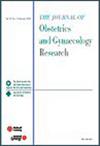Etiologies and clinical characteristics of primary amenorrhea: A study from a quaternary care hospital in southern Thailand
Abstract
Aim
This study aimed to investigate the causes and clinical characteristics of patients presenting with primary amenorrhea.
Methods
A retrospective review was conducted on patients diagnosed with primary amenorrhea at a quaternary care center in southern Thailand between January 2002 and September 2024. Patients with missing data or ambiguous genitalia were excluded. Primary amenorrhea was categorized into three main etiologies: hypergonadotropic hypogonadism (characterized by low serum estradiol and elevated follicle-stimulating hormone [FSH] levels, indicative of ovarian or gonadal disorders), hypogonadotropic hypogonadism (low serum estradiol with low or normal serum FSH levels, associated with hypothalamic–pituitary dysfunction), and eugonadotropic eugonadism (disorders of the uterus or genital outflow tract). Other conditions included anovulation, hyperprolactinemia, and thyroid disorders.
Results
Of the 320 patients included, 150 (46.9%) were classified as having eugonadotropic eugonadism. Among these, Müllerian agenesis was the most common cause (33.8%), followed by gonadal dysgenesis (28.8%). Patients with genital outflow tract obstruction were diagnosed at a significantly younger median age compared to those with Müllerian agenesis (14 years [interquartile range; IQR 13, 16] vs. 20 years [IQR 18, 24]; p < 0.001). Serum FSH levels differed significantly across the three main categories, with higher levels observed in hypergonadotropic hypogonadism (81.1 IU/L [IQR 65.2, 95.0]) compared to hypogonadotropic hypogonadism (0.8 IU/L [IQR 0.3, 3.4]) and eugonadotropic eugonadism (5.2 IU/L [IQR 3.5, 6.3], p < 0.001). Among patients with hypergonadotropic hypogonadism and hypogonadotropic hypogonadism who underwent ultrasonography (USG) (n = 100), the uterus was not visualized in 44 cases.
Conclusion
Müllerian agenesis emerged as the most frequent cause of primary amenorrhea, although it tended to be diagnosed later than genital outflow tract obstruction. Caution is warranted when assessing the presence of the uterus by USG, particularly in patients with hypergonadotropic hypogonadism or hypogonadotropic hypogonadism.



 求助内容:
求助内容: 应助结果提醒方式:
应助结果提醒方式:


